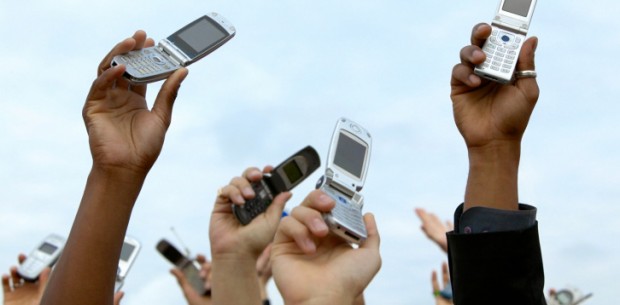"We have some significant issues with race relations, and the core of what it comes down to is that we have to redefine what we expect," Mills said. "Just because a student is Tweeting or using another back-channel, or whatever doesn't mean he's not being productive. And it takes away from trusting that student to do what's right for himself in his community. We need to be more trusting, more open and flexible."
Schools don't allow students of color to use their mobile devices because they think those students will not use them in what they consider appropriate ways, he said. "But the very fact that we're saying they're not being productive is to say that our values are more valuable than their values."
And therein lies the divide.
"Access is a basic right. It's the same as roads or clean water or electricity," Mills said. "Those are [accessible] here in this country because we expect it. The same thing should apply to the Internet. The Internet is about empowerment. If we take away this access because we think certain people aren't going to use it right, we're no better than governments who take away voting rights from minorities."
[RELATED: Students Demand to Use Technology in Schools]
The numbers line up: A recent study by QualComm showed that low-income students' test scores increased by 30 percent after they were given smartphones to access more information and instruction and to collaborate with their peers.
And discipline issues actually diminished in some schools that have Bring Your Own Device programs. For example, in the Katy Independent School District in Texas, one of the pioneers of the BYOD effort that participated in a pilot program with Cisco, director of technology Lonnie Owens said their results were surprising. “Discipline issues went down and test scores went up, so we viewed it as a success," Owens said.
Mills believes that the simple act of students using their coveted devices for study purposes makes learning more acceptable to them and to their peers. In neighborhoods where caring about school is most certainly not cool, Mills said "it's becoming more socially acceptable to talk about school stuff outside school because of that device. When they text or tweet about it, somehow it crosses the boundary of becoming okay. It's not exactly cool yet, but all of a sudden it's becoming okay."
HOW TO NARROW THE DIVIDE
For educators who want to start chipping away at the divide, Mills listed a number of ways.
1. GIVE STUDENTS ACCESS.
Many Title 1 schools -- those in low-income communities -- receive funds and grants, but don't always buy what they need. If they have enough funds, Mills said schools should invest in a 1-1 program -- a device for every student.
2. GIVE STUDENTS PROMPTS
Whether it's the school that provides the device, or whether students are allowed to use their own, it's important to give them guidance on how to use those devices for learning. "Students do not generally use their personal technology for learning activities unprompted," he said. "We have to provide them with prompts."
Educators should also be instrumental in guiding student etiquette with devices. For students who use text-speak and shorthand when handing in assignments, teachers can ask them to proofread and resend until the assignments are up to par. "We can teach them to use mobile literacy to help themselves," he said.
3. PROVIDE INSTRUCTIONAL OBJECTIVES.
"We need to think about what we are teaching," Mills said. "This is not technology -- this is Pedagogy 101." Educators must understand the dotted line between an assigned activity and the instructional objective, which should be tied to learning skills.
4. MAKE YOURSELF AVAILABLE.
Just giving kids a number where they can reach you has "exponential impact," Mills said. "Just that small gesture tells kids you're available." For those who don't feel comfortable giving students their phone numbers, Mills suggests using a Google voice account, which students can call and leave messages.
5. INVITE OBSERVERS TO YOUR MOBILE ENHANCED CLASS.
Parents, other teachers, and administrators will learn a lot from watching how kids can plug into learning by using their devices. During their visits, talk about the upward trajectory of kids you've noticed who have benefited from the change.
6. INVENTORY THE DEVICES.
Keep track of who owns what kind of device (especially after the holidays when kids receive new ones). This way, you can create flexible, shifting groups to make sure there's a good variety of devices in every group. Don't place all the iPhone 5 users in one group -- mix them up to promote equity.
7. USE DISCRETION.
Be careful not to publicly call out kids who don't have a device when organizing groups. Use common sense and compassion.
8. USE EVERYTHING YOU HAVE.
If the school has 10 Kindles, find ways to use them in your class. If it has six iPods or 30 computers, don't let them collect dust. Even the oldest computers can be fired up for basic research.
9. REFRAME PRODUCTIVITY.
Sitting quietly doesn't exemplify productivity, Mills said. If you have flexible processes, you can give students different ways of understanding.
10. TEACH PROCESS NOT CONTENT.
All educators, but especially those who teach low-income students, need to be open to students' ideas of showing what they've learned. If they don't want to write a blog, but want to create a video, be open to it.
11. VALUE COLLABORATION.
Promote group work and project based learning.


